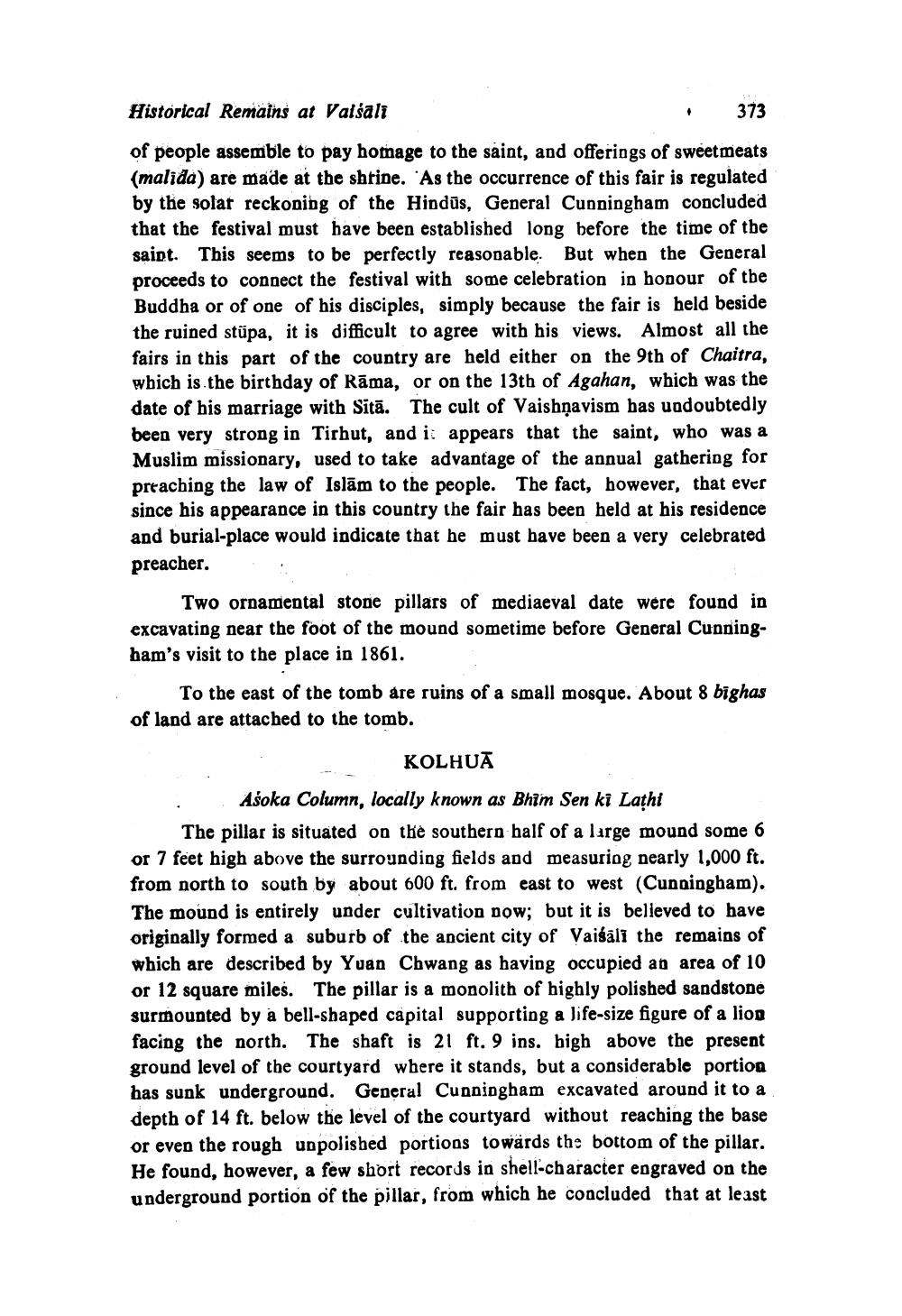________________ Historical Remains at Vatsali 373 of people assemble to pay homage to the saint, and offerings of sweetmeats (malida) are made at the shrine. As the occurrence of this fair is regulated by the solat reckoning of the Hindus, General Cunningham concluded that the festival must have been established long before the time of the saint. This seems to be perfectly reasonable. But when the General proceeds to connect the festival with some celebration in honour of tbe Buddha or of one of his disciples, simply because the fair is held beside the ruined stupa, it is difficult to agree with his views. Almost all the fairs in this part of the country are held either on the 9th of Chaitra, wbich is the birthday of Rama, or on the 13th of Agahan, which was the date of his marriage with Sita. The cult of Vaishnavism has undoubtedly been very strong in Tirhut, and it appears that the saint, who was a Muslim missionary, used to take advantage of the annual gathering for preaching the law of Islam to the people. The fact, however, that ever since his appearance in this country the fair has been held at his residence and burial-place would indicate that he must have been a very celebrated preacher. Two ornamental stone pillars of mediaeval date were found in excavating near the foot of the mound sometime before General Cunningham's visit to the place in 1861. To the east of the tomb are ruins of a small mosque. About 8 bighas of land are attached to the tomb. KOLHUA Asoka Column, locally known as Bhim Sen ki Lathi The pillar is situated on the southern half of a large mound some 6 or 7 feet high above the surrounding fields and measuring nearly 1,000 ft. from north to south by about 600 ft. from east to west (Cunningham). The mound is entirely under cultivation pow; but it is believed to have originally formed a suburb of the ancient city of Vaisali the remains of which are described by Yuan Chwang as having occupied an area of 10 or 12 square miles. The pillar is a monolith of highly polished sandstone surmounted by a bell-shaped capital supporting a life-size figure of a lion facing the north. The shaft is 21 ft. 9 ins. high above the present ground level of the courtyard where it stands, but a considerable portion has sunk underground. General Cunningham excavated around it to a depth of 14 ft. below the level of the courtyard without reaching the base or even the rough unpolished portions towards the bottom of the pillar. He found, however, a few short records in shell-character engraved on the underground portion of the pillar, from which he concluded that at least




